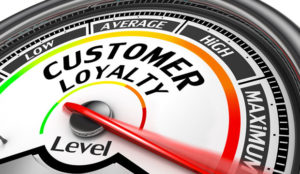The e-commerce boom has led many large brands to bypass wholesalers completely and shift to a direct-to-consumer (DTC) model — a process called “supplier disintermediation.”
By cutting out the middleman, brands can earn a higher margin and gain direct access to consumers and their data. For these reasons, leading brands such as Nike are aggressively making the shift to DTC, and other large retailers are following suit.
However, many are forgetting to take into account three major considerations. Failure to address these key factors ahead of time can lead to supply chain and business-to-business integration issues, and revenue leakage.
In fact, 88 percent of enterprises admit they lost orders last year, and more than half said they misplaced more orders in 2020 than in the previous year. Additionally, one-quarter admit they don’t know how many orders they are losing.
Following are three key considerations for business leaders to address before making the decision to shift from a wholesale distribution model to DTC.
1. Is the right technology infrastructure in place to support DTC?
Poor technology integration between modern apps and disparate legacy technologies is causing more lost orders for retailers than anyone could have imagined. Lost orders certainly impact revenue, but that is just the tip of the iceberg.
A lost order means product inventory sitting on the shelf at a warehouse or a retail store which can be costly. Furthermore, if the goods are perishable, a lost order can lead to expired products, which directly impacts margins.
These lost orders can also cause larger issues with ecosystem entities, such as customer and trading partners. Once these relationships are impacted, they can be difficult to repair.
Modern integration software helps eliminate lost orders by providing the necessary visibility to track product, resolve errors and give proactive status updates. In turn, this empowers customer-facing teams with access to data to quickly communicate with customers and trading partners in the event of an issue.
In addition, companies need application programming interfaces (APIs) to go DTC or enable omnichannel fulfillment. APIs enable faster digital transformation and can provide end-to-end visibility into the integrations comprising mission-critical business processes, such as order-to-cash, procure-to-pay, or load-tender-to-invoice.
It’s crucial to have this breadth of visibility and control over business processes to drive better results and generate revenue. E-commerce isn’t just a front-end process, it must be a thorough solution that affects all the backend processes within the business, as well as the broader, extended ecosystem.
2. Will the consumers’ customer experience (CX) be impacted negatively or positively?
To remain competitive with digital-first DTC marketplaces such as eBay and Amazon, digital transformation needs to be a top priority for all retailers and their leaders.
For brands to keep up with today’s digital market, this requires deploying a strategic, ecosystem-driven integration approach that expands market opportunity, giving their distribution model a competitive edge while also enhancing the consumer’s experience.
Modern hybrid cloud and on-premises integration increases business agility and allows retailers moving toward a DTC model to minimize complexity without losing control. This enables them to expand market reach and enable more efficient, cohesive e-commerce and digital marketplace channels.
Once there is successful integration between of the B2B apps, DTC retailers can provide a personalized and flexible CX online without the need to rely on a wholesale distributor. Then, the brand has more control over the shopping experience and its level of customer service.
Success could very easily come down to how well the business manages the customer experience and delivers on customer expectations.
3. Does the logistics team have the resources to handle DTC? If not, what adjustments to the business should be made for the DTC model to work efficiently?
DTC requires the internal team to handle all sales and shipping, in addition to manufacturing which can be quite a heavy lift for a small workforce. Therefore, it’s critical to make sure the business has the resources to handle the amount of labor required to shift to a DTC model. The organization may need to make changes to its entire business model to be able to implement a DTC approach at scale.
Technology can automate certain tasks so that employees can focus their time working on more complex projects. A sufficient workforce with the right tools for the job makes any task easier. In the same way, the right integration technology enables the ecosystem in the most powerful way possible, both now and over the long term.
With e-commerce integration, the accuracy of data is never left to chance. Whereas with manual data entry, there is always going to be an opportunity for human error. Inventory synchronization, real-time track updates and pricing, all speed up data exchange and make it more accurate than ever before.
Prior to making the decision to go DTC, it’s important think about all the changes needed across the business model to meet the demands of customers and prevent employees from being overwhelmed with a new, larger workload. An e-commerce integration platform can allow businesses to handle increased demand without the need of additional resources.
Use Technology to Build a Solid Foundation for DTC
As we’ve seen with global brands like Nike, retail and consumer products companies are increasingly embracing DTC models to directly compete with the wholesale distribution model.
Although there is great potential for financial savings by switching to DTC, there can be major complications if it’s done without first considering factors such as the organization’s technology infrastructure, customer demand, and bandwidth to meet DTC orders.
Brands must ensure their B2B integrations are operating seamlessly prior to taking the next step toward a DTC model.
















































Social Media
See all Social Media